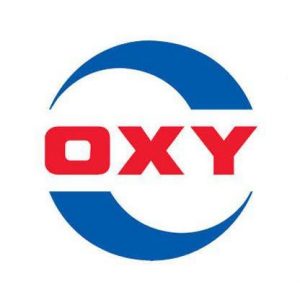In America’s biggest oilfield, the Permian Basin, Occidental Petroleum Corp. is planning to build the world’s first large-scale Direct Air Capture (DAC) plant that will lower emissions of the primary greenhouse gas responsible for global warming and will one day produce a carbon-negative barrel of oil. The plant will be located deep in the Permian Basin and will be operational by 2023.
The process will be the opposite of how oil and gas companies traditionally operate, as it will remove carbon dioxide from the atmosphere and pump it deep underground, where it will remain for years. The plant will be designed to capture as much as 1 million tons of carbon dioxide a year, which is equivalent to the emissions from about 215,000 cars, or a quarter of what a coal power plant produces.
‘Carbon capture’ has always been a considered option in meeting climate goals but the high cost has slowed down the adoption. It has limited companies to siphoning off concentrated streams of C02 from industrial facilities and burying them underground at two dozen plants around the world.
With the plant set to cost a fortune, Occidental will be needing support from tax credits and outside investors to be financially viable. The company will license the DAC technology from a Canadian start-up, Carbon Engineering. The plant will be funded through 1PointFive, owned by the company’s venture arm, Oxy Low Carbon Ventures, and private equity farm, Rusheen Capital Management LLC.
The venture also plans to attract outside investors, benefiting from the boom in environmental investing and the growing number of companies trying to lower their carbon footprint. It has already gotten a stake from United Airlines Holdings Inc.
To cover the cost of operating the plant, the Company will initially use much of the CO2 to push out oil from underground reservoirs, thereby replacing one pollutant with another. Occidental’s plant can be built anywhere because it takes CO2 directly from the air.
Occidental believes that the technology will become cheaper as more DAC plants are being built, which will allow engineers to learn to optimise the several steps necessary to make complex projects more efficient. Such green energy cost reductions previously occurred with solar panels and wind turbines.
The Chief Executive Officer of Occidental, Vicki Hollub, said: “We are not afraid of the transition out of oil and gas, because we’re a part of that transition. I do believe that in 15 to 20 years, more of our income will be from carbon management than from oil and gas.”
“It’s not a technology that’s a trial-and-error type of thing; you know it will work. We need to just get it to scale.”
To cut costs, Occidental would be using the CO2 it captures in its enhanced oil recovery business, where the gas is pumped into older wells to infiltrate rocks and acts like soap to release crude. Building an air capture plant close to its extensive Permian operations would eliminate the costly need of transporting CO2 to its enhanced recovery wells, and the technology is key to helping Occidental achieve its goal of becoming carbon-neutral by 2050.
Occidental is one of the most highly indebted U.S. oil producers after buying Anadarko Petroleum Corp. for $37 billion in 2019, before the COVID-19 pandemic crashed the global price of crude. The company has been forced to cut its dividend to almost zero, sell billions of dollars of assets, and slash spending to the point that its crude production may fall this year.
ABOUT OCCIDENTAL

Occidental Petroleum Corporation (often abbreviated Oxy in reference to its ticker symbol and logo) is an American company engaged in hydrocarbon exploration in the United States, the Middle East, Africa and Latin America as well as petrochemical manufacturing in the United States, Canada, and Chile. It is organised in Delaware and headquartered in Houston.
